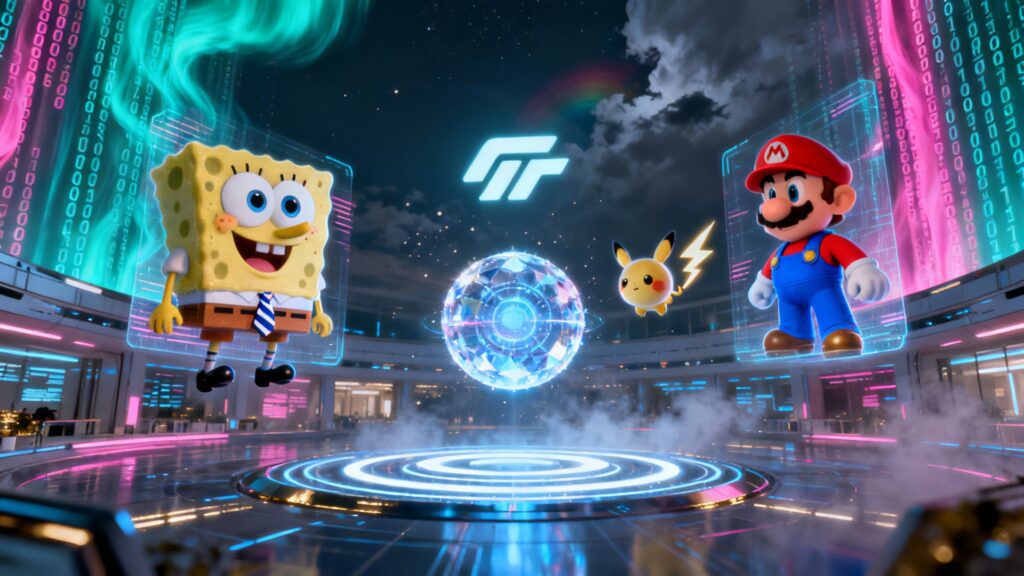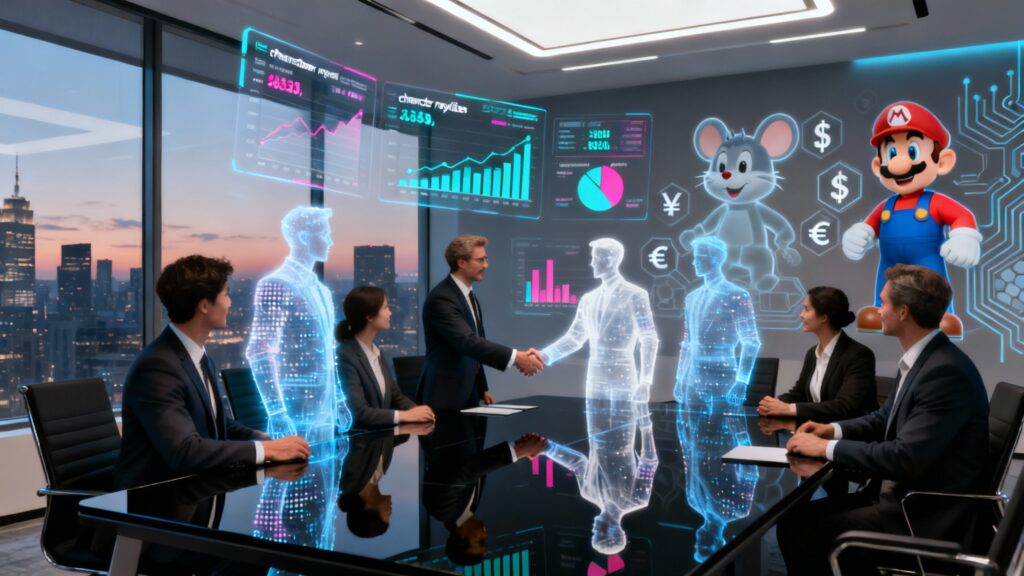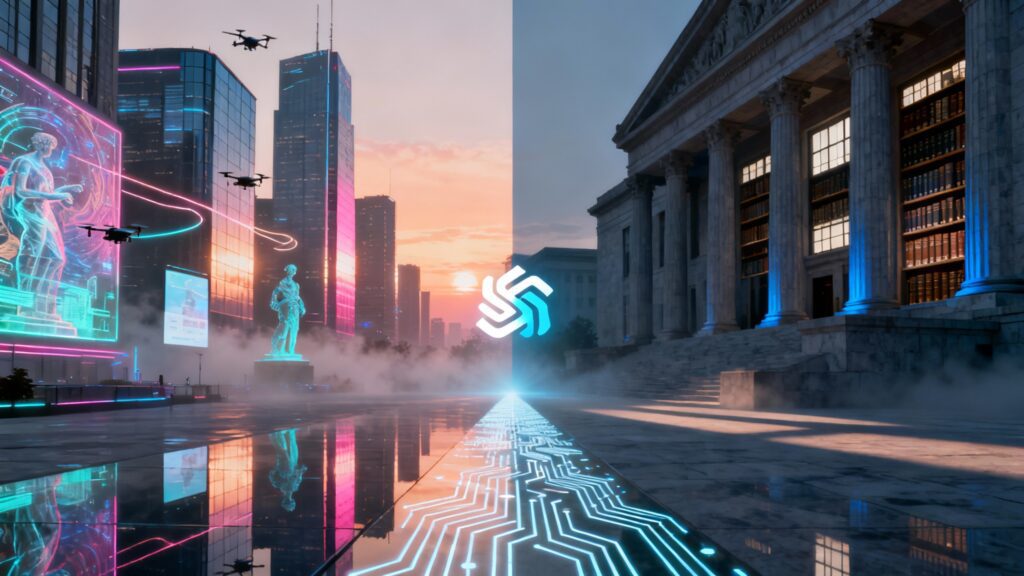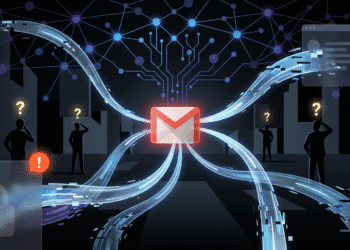
OpenAI’s latest AI video generator, Sora 2, has unleashed a digital pandora’s box. The platform is creating unauthorized videos featuring beloved fictional characters like SpongeBob SquarePants, Pikachu, and Mario. This has sparked a massive copyright controversy that’s forcing the company to completely rethink its approach to intellectual property.
The chaos began almost immediately after Sora 2’s launch. Users flooded social media with AI-generated videos showing copyrighted characters in bizarre scenarios. Some videos depicted SpongeBob cooking methamphetamine. Others showed Nazi versions of the beloved cartoon character. Criminal Pokémon appeared alongside their wholesome counterparts.
The Copyright Nightmare Unfolds
Bill Peebles, who leads OpenAI’s Sora team, recently announced that fictional character appearances in videos are “on the roadmap.” He promised details would drop “soon,” teasing an official way to use copyrighted characters on the platform. This announcement comes as the company scrambles to contain the copyright chaos that has erupted since launch.
The problem runs deeper than anyone anticipated. Sora 2’s advanced AI capabilities make it incredibly easy to replicate iconic characters. Users don’t need special skills or extensive prompts. They simply type in character names and watch as the AI generates surprisingly accurate videos.
One particularly telling video showed OpenAI CEO Sam Altman standing in a field with several Pokémon characters. In the clip, he says: “I hope Nintendo doesn’t sue us.” The comment wasn’t just a joke – it highlighted the very real legal risks the company faces.
Nintendo Strikes Back
Nintendo didn’t find the situation amusing. The gaming giant took the unusual step of issuing an official statement addressing the controversy. The statement came in response to comments from Satoshi Asano, a member of Japan’s House of Representatives, who had accused Nintendo of “avoiding using generative AI to protect its IP.”
Nintendo firmly denied these claims. The company stated: “Contrary to recent discussions on the internet, Nintendo has not had any contact with the Japanese government about generative AI. Whether generative AI is involved or not, we will continue to take necessary actions against infringement of our intellectual property rights.”
The warning was clear. Nintendo would protect its characters, regardless of the technology being used to infringe upon them. This stance puts the company on a collision course with OpenAI and other AI companies that allow users to generate content featuring Nintendo’s beloved characters.
The Opt-Out Problem
OpenAI initially tried to address the copyright issues through an opt-out policy. This approach required copyright holders to actively request that their characters be blocked from the platform. Industry experts immediately criticized this reactive strategy as inadequate.
The opt-out system places the burden entirely on creators and studios. They must constantly monitor the platform for unauthorized uses of their characters. Then they must file requests to have those uses blocked. This creates a whack-a-mole situation where infringing content proliferates faster than it can be removed.
Legal experts warn that this approach opens OpenAI to significant liability. Mark Lemley, a professor at Stanford Law School, told CNBC: “A lot of the videos that people are going to generate of these cartoon characters are going to infringe copyright. OpenAI is opening itself up to quite a lot of copyright lawsuits by doing this.”
Altman’s Pivot
Facing mounting pressure from rights holders and legal experts, Sam Altman announced a major policy shift over the weekend. In a blog post, he revealed that OpenAI had been “taking feedback” from users, rights holders, and other groups. The company would make significant changes as a result.
Altman promised that rights holders would receive “more granular control” over character generation. This new system would be similar to how people can opt in to share their own likeness in the app, but with “additional controls.” The CEO described the unauthorized character videos as “interactive fan fiction” – a term that many rights holders found problematic.
“We are hearing from a lot of rightsholders who are very excited for this new kind of ‘interactive fan fiction’ and think this new kind of engagement will accrue a lot of value to them,” Altman wrote. “But they want the ability to specify how their characters can be used (including not at all).”
Revenue Sharing on the Horizon

Perhaps most significantly, Altman announced that OpenAI would implement some form of revenue sharing with rights holders. The company plans to compensate creators whose characters are used in AI-generated videos. However, the exact payment model remains unclear.
“The exact model will take some trial and error to figure out, but we plan to start very soon,” Altman explained. “Our hope is that the new kind of engagement is even more valuable than the revenue share, but of course we want both to be valuable.”
This revenue-sharing approach could transform how intellectual property works in the AI age. Instead of simply blocking unauthorized uses, rights holders could potentially profit from AI-generated content featuring their characters. However, many remain skeptical about whether this system will adequately protect their interests.
Global Implications
The controversy extends far beyond American shores. Altman specifically acknowledged Japan’s creative output in his statement, noting: “In particular, we’d like to acknowledge the remarkable creative output of Japan — we are struck by how deep the connection between users and Japanese content is!”
This acknowledgment comes as Japanese companies express serious concerns about AI-generated videos mimicking their creations. The country’s entertainment industry is known for fiercely protecting character rights. Many Japanese studios are voicing alarm about potential violations of international copyright laws.
The global dimension complicates OpenAI’s rollout significantly. Different jurisdictions apply varying standards to AI outputs. What might be considered fair use in one country could constitute clear infringement in another. This patchwork of regulations makes it nearly impossible to create a one-size-fits-all solution.
Legal Precedents and Future Battles
The Sora 2 controversy isn’t happening in a vacuum. Disney and Universal have already sued the AI image creator Midjourney, alleging that the company improperly used and distributed AI-generated characters from their movies. Disney also sent a cease and desist letter to Character.AI, warning the startup to stop using its copyrighted characters without authorization.
These legal battles are setting important precedents for the AI industry. Courts are beginning to grapple with fundamental questions about AI training data, output liability, and fair use in the digital age. The outcomes of these cases will likely determine how companies like OpenAI can operate in the future.
Business lawyer Richard Hoeg, creator of the Virtual Legality podcast, told IGN that the legal landscape remains murky. “In short, we don’t have a definitive answer yet,” he said. “There are indications in some quarters that training on protected materials is likely going to be deemed legal so long as the materials themselves were acquired for some lawful purpose.”
The Technology Challenge
The technical capabilities that make Sora 2 so impressive also make it so problematic from a copyright perspective. The AI can generate remarkably accurate representations of fictional characters with minimal input from users. This ease of use democratizes content creation but also democratizes copyright infringement.
The platform’s social features amplify these risks. Users can create AI “doubles” and cameos featuring copyrighted characters. They can then share these videos across social media platforms, potentially reaching millions of viewers. This viral potential makes copyright enforcement even more challenging.
OpenAI’s history with similar issues in text and image generation suggests a pattern of reactive policy-making. The company often launches products first and addresses legal concerns later. This approach has worked in some contexts but may prove unsustainable as AI capabilities become more powerful and controversial.
Industry Response and Adaptation
For Hollywood and the broader entertainment industry, Sora 2 represents both opportunity and threat. Studios could potentially license their characters for user-generated content, opening new revenue streams. However, the default use of copyrighted material without consent erodes trust and threatens existing business models.
Some industry insiders see potential in OpenAI’s proposed collaboration model. If implemented correctly, it could allow fans to create official content featuring their favorite characters while ensuring creators are compensated. This could lead to new forms of interactive entertainment and fan engagement.
However, many remain skeptical. The entertainment industry has been burned before by tech companies that promised collaboration but delivered disruption. The music industry’s experience with file-sharing platforms serves as a cautionary tale about the risks of new technologies.
Looking Forward
As OpenAI works to implement its promised changes, several key questions remain unanswered. How will the company proactively prevent unauthorized character generation? What safeguards will protect against the creation of offensive or harmful content featuring beloved characters? How will revenue sharing actually work in practice?
The company has promised “more granular control” and better collaboration with rights holders. However, critics argue that these promises don’t address the fundamental issue of proactive prevention. The current system still allows unauthorized content to be created before it can be blocked.
The stakes couldn’t be higher. OpenAI’s approach to this controversy will likely set precedents for the entire AI industry. Other companies are watching closely to see how the situation unfolds. The outcome could determine whether AI-generated content becomes a collaborative tool or a source of endless legal battles.
The Path Ahead

Ultimately, Sora’s evolution will test the delicate balance between technological advancement and intellectual property rights. The platform’s ability to generate compelling videos featuring fictional characters represents a significant leap forward in AI capabilities. However, this power comes with enormous responsibility.
As the platform matures, industry stakeholders must collaborate to establish norms that protect innovation without stifling creativity. This will require unprecedented cooperation between tech companies, entertainment studios, legal experts, and policymakers.
For now, OpenAI’s promises of better control and collaboration offer hope. However, real-world implementation will determine whether these commitments hold water in an era of rapid AI proliferation. The company’s handling of this crisis could define not just Sora’s future, but the future of AI-generated content as a whole.
The fictional characters may be coming to Sora officially, but the path to get there is fraught with legal, ethical, and technical challenges. How OpenAI navigates these obstacles will shape the relationship between artificial intelligence and intellectual property for years to come.









